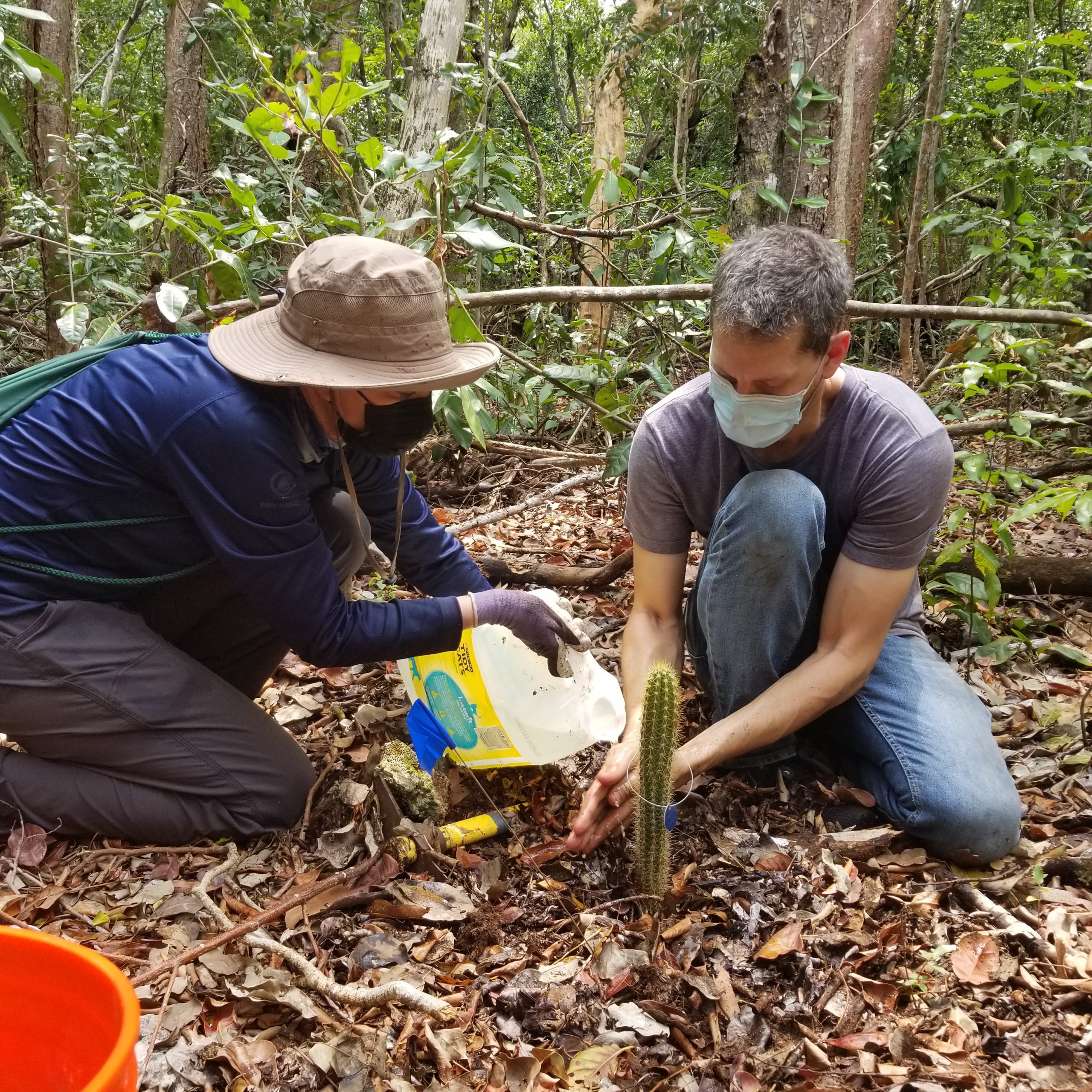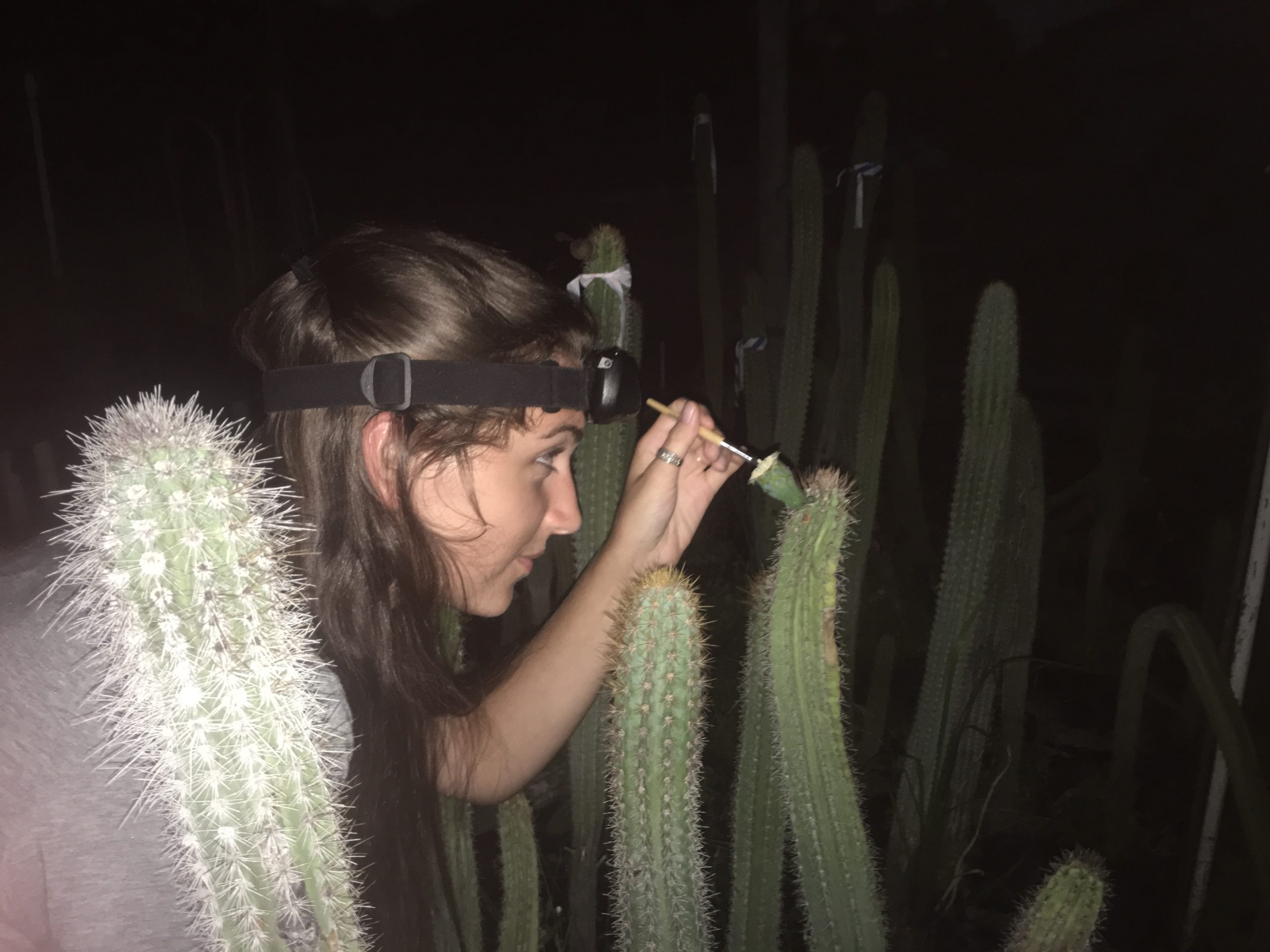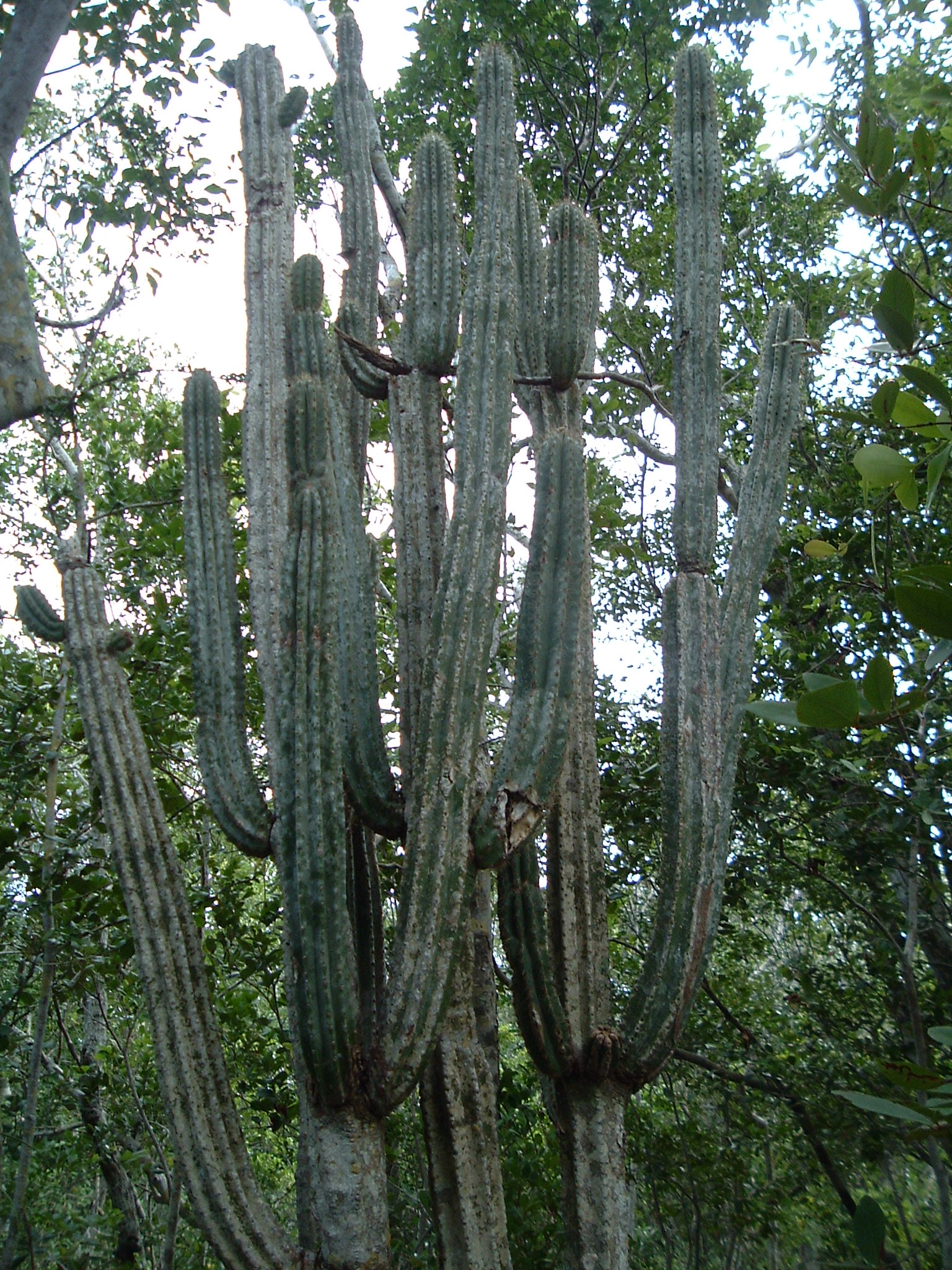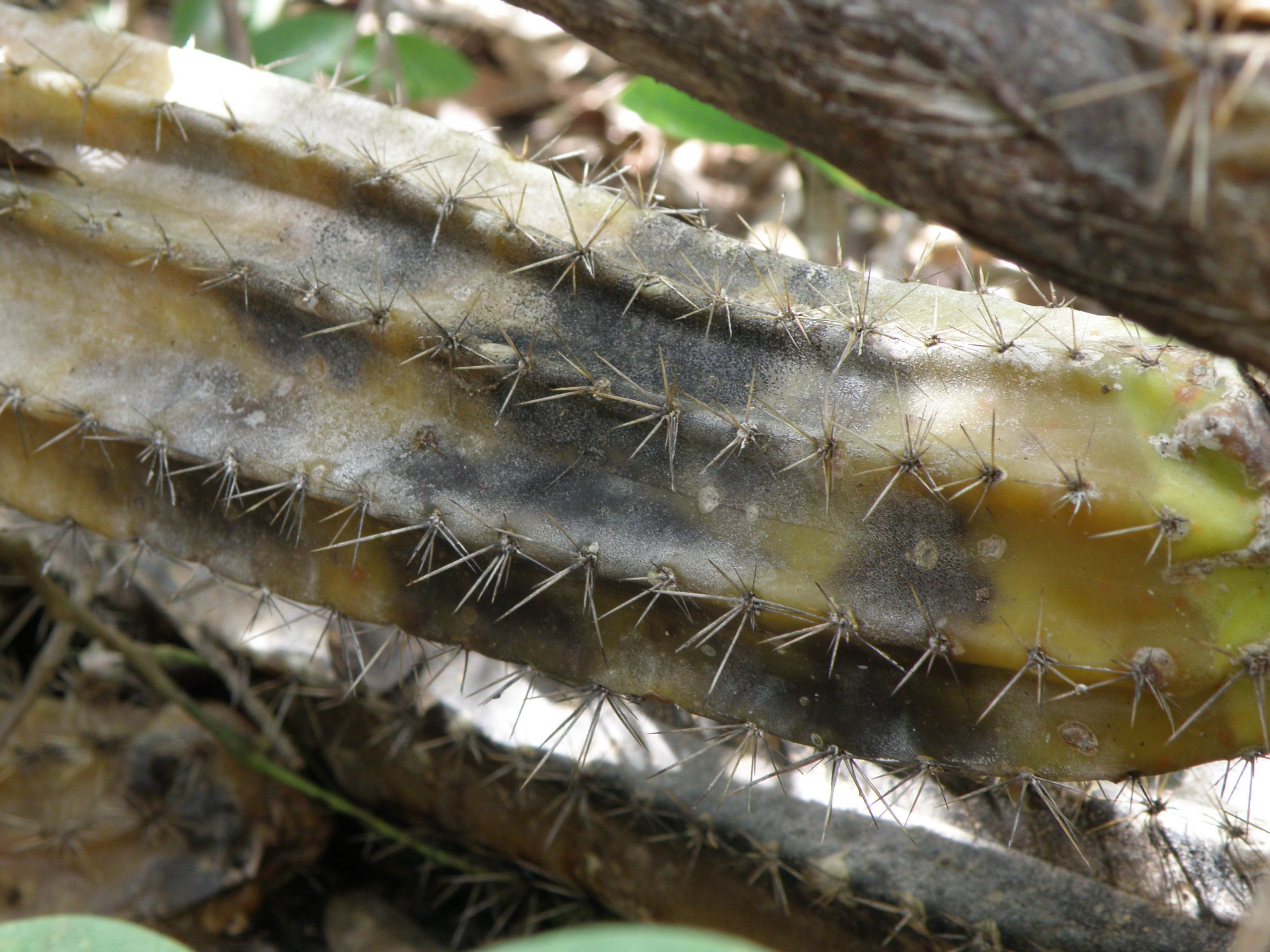Long-term Conservation Efforts for the Endangered Key Tree Cactus
“What are you doing to help the Key Tree Cactus? They are dying!” The urgent question from USFWS Biologist Phillip Hughes, calling from the National Key Deer Refuge, stunned me. We had visited the Key Tree Cactus in 2002 when Joyce first arrived in Florida, four years prior to this call. Many of the plants looked fine at that time, but clearly things had changed for the worse. Between 2004 and 2006, South Florida had suffered from eight intense hurricanes. As a newcomer to Florida, Joyce knew hurricanes were a natural disturbance that rare plants faced — but these storms presented extremes that even shocked the long-term residents!
As a CPC Participating Institution, we knew that the Plant Conservation Team at Fairchild Tropical Botanic Garden had to do something quickly. We began by re-visiting the populations in the Refuge with Phillip, to see for ourselves the damage he noted. We immediately found a puzzle. Plants had suffered great mortality on the west side of a road that bisects the Key Tree Cactus habitat, while on the east side — less than 1 mile away — they fared better. Why? And were the plants faring better in other parts of the Florida Keys?
To search for answers, we secured funding from U.S. Fish and Wildlife Service and the Florida Department of Agriculture and Consumer Services, hired some good field botanists, and solicited collaboration from our cactus-expert CPC partners at the Desert Botanical Garden. The team then set out to tackle the mystery of what was causing high mortality in the Refuge, and to identify any differences in comparison to other populations.
Over the next decade, we monitored populations across the Upper, Middle and Lower Keys and conducted experimental tests to learn what we needed to do to help the Key Tree Cactus survive. We discovered that soil salinity was higher where plants died, yet elevation was slightly higher too. It made sense that salinity could affect survival, but how might elevation be playing a role?
Our follow up research turned out to be challenging. We addressed the salinity question in a controlled greenhouse study. Our results showed that plants from an Upper Keys mother tolerated salt much better than plants from a Lower Keys mother, where we had observed high mortality. This suggested that there could be some individuals with enough salt tolerance to benefit Key Tree Cactus in the future.
To test plant establishment under different environmental conditions, we conducted a series of reintroductions into varying microsites. We hypothesized that survival would vary with elevation and openness of the canopy. In 2012, we reintroduced 36 plants into low-elevation hammock (a habitat type dominated by mixed tropical hardwood trees) and 36 plants into hammock/mangrove ecotone (the transition area between tropical hardwood hammock and mangrove swamp). In 2015, we installed 89 plants into mature hammock, which had the highest elevation of the three sites. However, by Feb 2020, only 12, 17, and 19 plants survived at those locations, respectively. During the first months following installation, many of the plants succumbed to a fast-acting pathogen. In some cases, plants that looked fine one week appeared completely mushy the following week. As yet, our attempts to identify the pathogen have not succeeded. The survivors may hold genes that allow resistance to the pathogen.


We suspected that horticultural factors may have also contributed to mortality of the transplanted plants. At the early stages of this research, fruit set in the wild was rare, therefore we propagated many plants from vegetative cuttings. This allowed us to conserve individuals that were dying in the wild – rescuing a piece of stem allowed us to root the stem and have that genotype alive in the nursery. However, propagating by this method limited the numbers of plants we could generate. We also noted that container-grown plants became root-bound, and when used in the reintroduction were easily knocked over in hurricanes.
Although identifying key survival factors has not been simple, we will persist in seeking methods to conserve this gravely threatened species. What is crystal clear at this point is the continued importance of maintaining ex situ collections of the Key tree cactus and continuing reintroduction efforts. Our ex situ collection at Fairchild now holds over 350 plants from five wild populations and private collections, and we recently germinated nearly 1,000 seedlings, which will add immensely to the stability of our collection. This represents more individuals than are living in the wild and includes rooted cuttings from plants that are no longer alive in the wild.
Our ex situ collections not only preserve the genetic diversity of the wild population, they provide a resource for research and generating more plants. To overcome the problem of poor fruit set, we hand-pollinated plants in our collection, greatly increasing the number and diversity of viable fruits produced. The seeds from this research allowed us to collect and send seeds to the National Laboratory for Genetic Resources Preservation in Fort Collins, CO, and to grow many healthy seedlings that may return to the wild habitats. Florida Keys land manager partners continue to work with us to build up wild populations, either through augmentations or reintroductions to new locations.
It has given us great hope that there are so many committed to seeing that Key Tree Cactus stays on the land for as long as the sea allows.
-

Reproduction of Key tree cacti in the wild is a very rare occurrence but some individuals in Fairchild’s conservation collections flower and fruit each summer. Fruit typically split open on the plant, which perhaps increases the likelihood of attracting a potential disperser. Photo by Devon Powell. -

In 2006 and 2007, Fairchild received a grant from USFWS to assess the key tree cactus throughout its range and to take cuttings from all populations and create an ex situ conservation collection at Fairchild garden. Experts from Desert Botanic Garden traveled to South Florida to help with the effort. Most of the key tree cacti like this one that were multi-stemmed and over 2 meters tall are now gone. Photo: Fairchild Tropical Botanic Garden. -

In the Lower Keys, in what was once the population stronghold, most of the Key tree cacti became necrotic and died over the past 3 decades, like this one photographed in 2010. Photo: Fairchild tropical Botanic Garden.
We gratefully acknowledge the close collaboration of dozens of people (staff and volunteers) and many different agencies who have helped us conserve this species, including US Fish and Wildlife Service, the Florida Department of Agriculture and Consumer Services, The Florida Park Service, the City of Islamorada, Florida International University, CPC, National Laboratory for Genetic Resources Preservation, and Desert Botanical Garden.